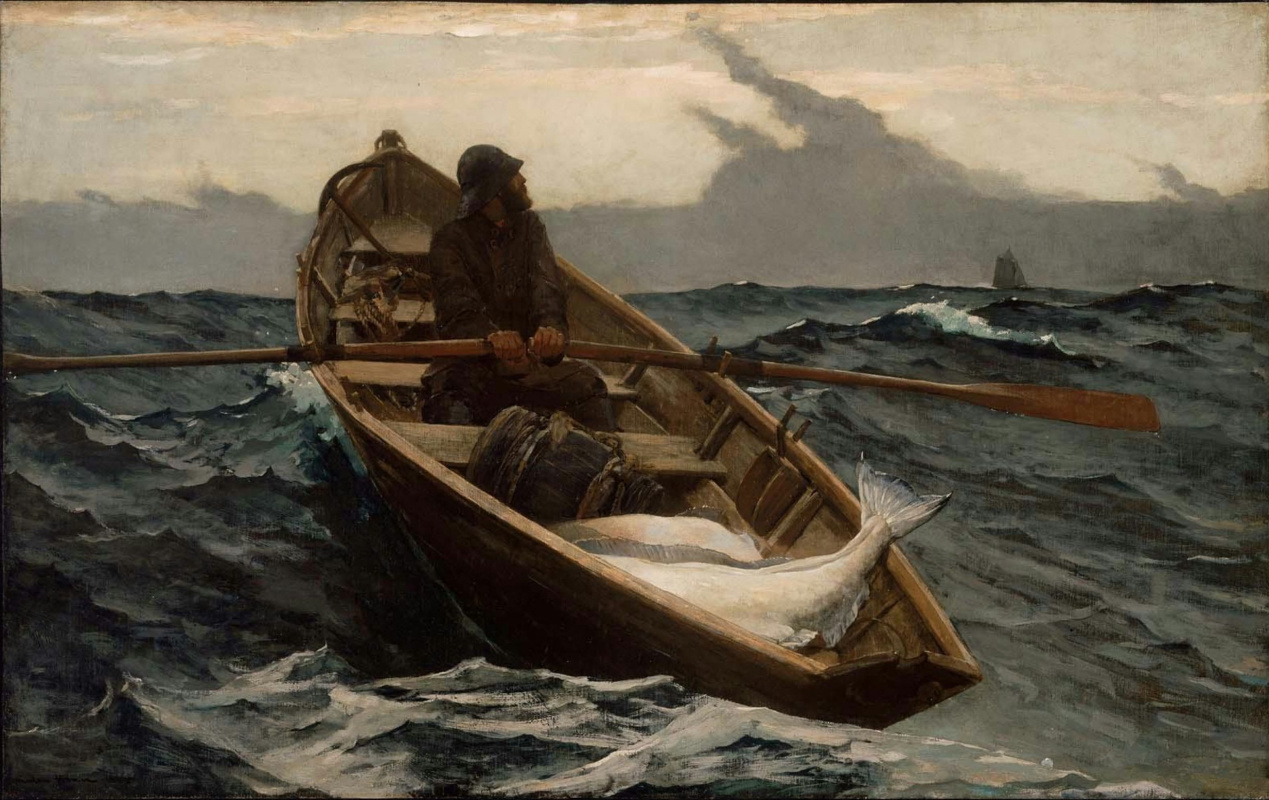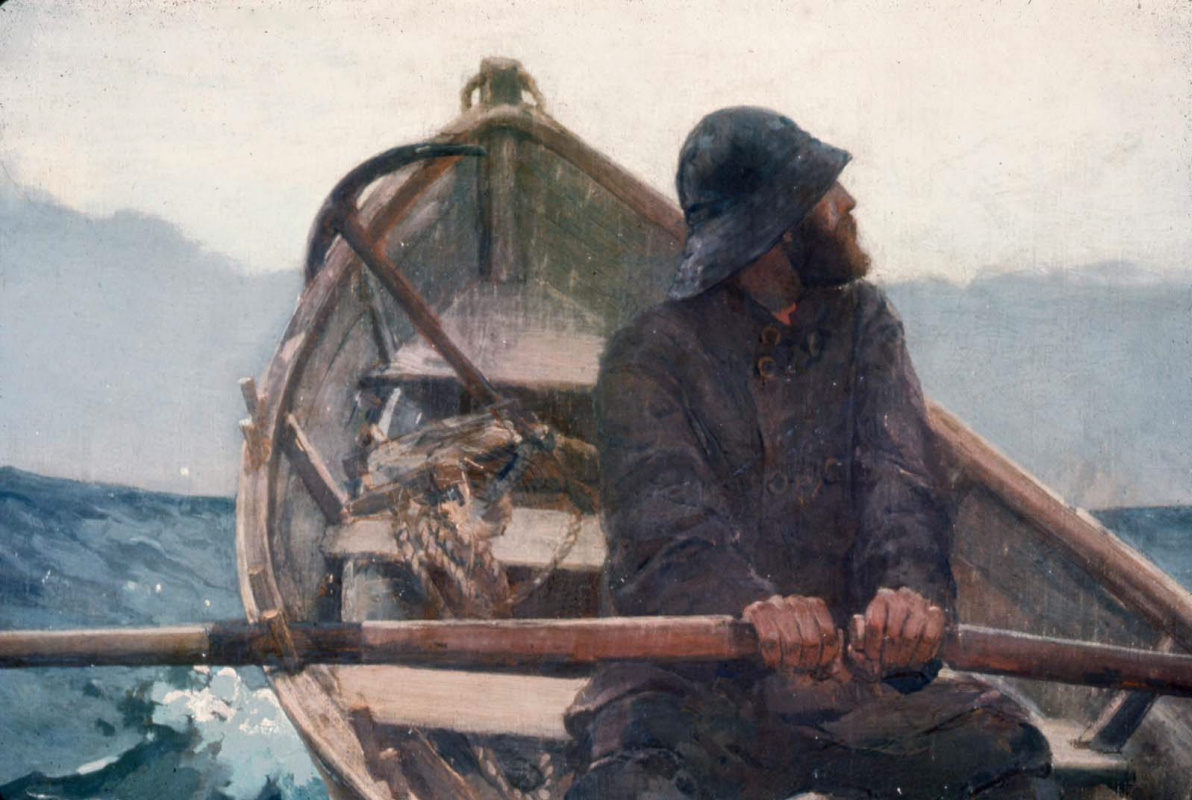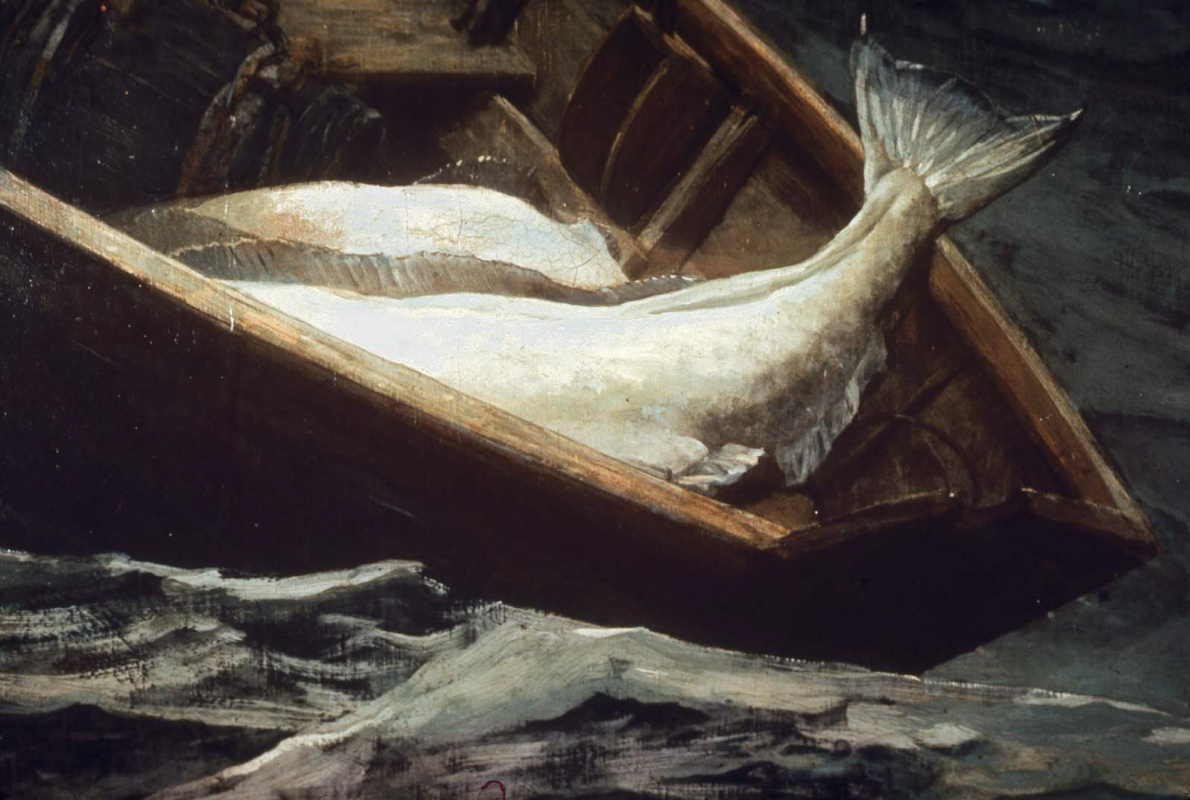log in
Enter site
Login to use Arthive functionality to the maximum
The fog is coming
Winslow Homer • Painting, 1885, 76.8×123.2 cm
Description of the artwork «The fog is coming»
In 1882, Homer returned to America from England, where he lived for almost a year and a half, observing the life and work of fishing communities cullercoats the North sea. The artist settled in Prouts Neck, Maine, and equips the Studio in the summer house of his family. Living and working at the point where the land meets the sea, Homer gets an endless source of inspiration, but it is much more interested in the relationship between man and nature, collision with untamable elements and often completely helpless in front of her. During the summer of 1884, Winslow Homer travels around the Peninsula of Cape Ann, again watching the hard work of fishermen, now Gloucester fleet. The artist makes an outline on Board of the schooner, and then uses them in large canvases painted with oil.
Picture "Fog's coming" was first introduced to the public in 1885, under the neutral title of "halibut-Fishing", and first you would see just another image of fisherman working the oars in loaded with fish punt. It is not known whether it is someone's error, or Homer himself changed the name of the fabric, but he made every effort to present it again under the correct name, which made the picture a whole new meaning and different accents.
The fisherman depicted in the painting in a very tense moment. Hearing with the basestar signal warning of impending fog, the man estimates the distance to the ship, which he will have to overcome in the weighted catch the skiff. The danger of running in complete isolation in the thick fog, loss of orientation, inability to return home or get to a safe place and, finally, death at sea – fears are familiar to every angler who find themselves in this situation. The man's face is drawn sparingly, but tension and worry clearly visible in his posture and turning his head. This feeling is reinforced by the fact that Homer provides to the viewer to speculate about the fate of a fisherman.
Author: Eugene Sidelnikov
Picture "Fog's coming" was first introduced to the public in 1885, under the neutral title of "halibut-Fishing", and first you would see just another image of fisherman working the oars in loaded with fish punt. It is not known whether it is someone's error, or Homer himself changed the name of the fabric, but he made every effort to present it again under the correct name, which made the picture a whole new meaning and different accents.
The fisherman depicted in the painting in a very tense moment. Hearing with the basestar signal warning of impending fog, the man estimates the distance to the ship, which he will have to overcome in the weighted catch the skiff. The danger of running in complete isolation in the thick fog, loss of orientation, inability to return home or get to a safe place and, finally, death at sea – fears are familiar to every angler who find themselves in this situation. The man's face is drawn sparingly, but tension and worry clearly visible in his posture and turning his head. This feeling is reinforced by the fact that Homer provides to the viewer to speculate about the fate of a fisherman.
Author: Eugene Sidelnikov




